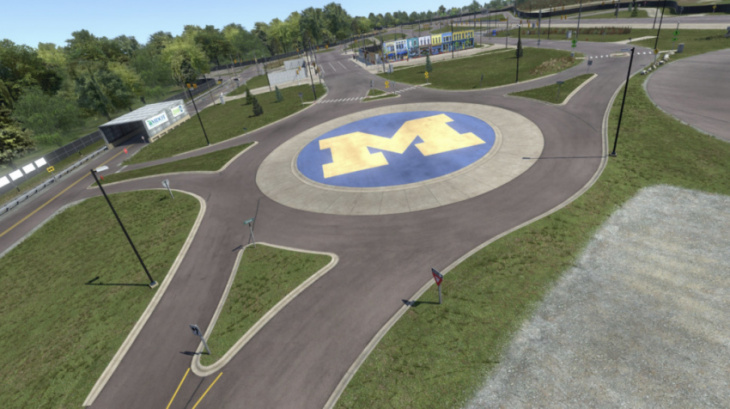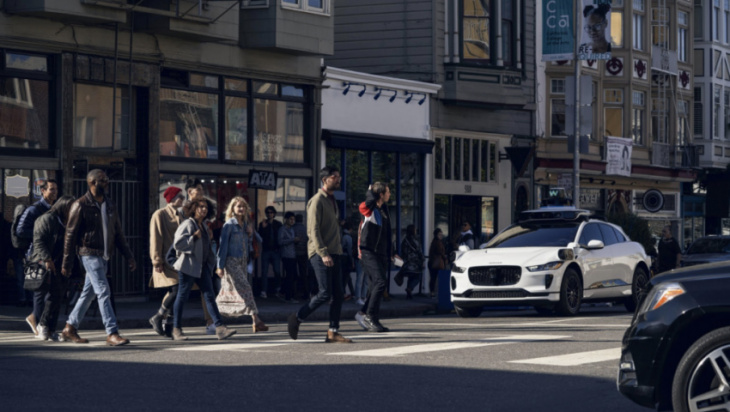As the AV industry presses for top-down federal regulation, certain states have become the cradle of self-driving tech and next-gen mobility. By Daniel Savrin and Mark Fanelli
- The history of federal regulation of AVs
- Current federal incentives for AV technologies
- Michigan, California, and Arizona lead the way as the most AV-friendly states
- The autonomous road ahead
In April, US federal legislation was introduced that would expand the National Highway Traffic Safety Administration (NHTSA)’s regulatory authority to relax limits on the number of on-road vehicles that each company can manufacture, which do not comply to its human-centric safety requirements. This Congressional action marked the sixth consecutive year in which federal autonomous vehicle (AV) legislation was proposed and failed to advance to the President’s desk.
Under current NHTSA regulations, automakers must equip vehicles with features designed for human operation, such as steering wheels and accelerator and brake pedals. However, these common features are superfluous in AVs with Level 4 capabilities. In these situations, NHTSA may annually exempt 2,500 vehicles per manufacturer from compliance with certain safety regulations. To date, NHTSA has not granted any AV-related exemptions and manufacturers are forced to comply with standards dating back to the 1960s. The proposed legislation would authorise NHTSA to exempt 15,000 AVs per manufacturer, for each of the first three years, from such regulations that are hindering the mass-adoption of AV technologies. Beyond three years, NHTSA would have the power to exempt 80,000 AVs annually per manufacturer if the technology is “at least as safe as human-driven vehicles.”
As Congressional action continues to be elusive, AV stakeholders must look to states that incentivise autonomous driving technologies, such as Michigan, California, and Arizona. These states are some of the most AV-friendly jurisdictions because of their progressive statutory frameworks, AV testing sites, and highly educated workforces.
The history of federal regulation of AVs
Since 2012, the federal government has published voluntary guidance that empowers states to create AV statutory frameworks that may incentivise autonomous driving activities based on their risk tolerance. This state-focused approach has spurred 40 states, plus Washington, DC, to enact various levels of AV laws that allow for testing on non-public roads, fully autonomous operation on public roads, and/or on-demand transportation services.

Michigan’s Mcity is the world’s first purpose-build facility for testing connected and automated vehicles and technologies under controlled, realistic conditions
Most recently, the US Department of Transportation (DOT) expanded on its voluntary AV guidance, which will double as the blueprint for the upcoming federal AV framework, known as Ensuring American Leadership in Automated Vehicle Technologies: Automated Vehicles 4.0 (AV Policy 4.0). AV Policy 4.0 placed a stronger emphasis on passenger safety, AV architecture modernisation, and remaining technology neutral. AV Policy 4.0 also updated DOT’s guidance on AV privacy, cyber security, patents, and accessibility of vehicles. Building on AV Policy 4.0’s emphasis on safety, in January 2021, Secretary Pete Buttigieg issued a standing order requiring all state departments of transportation and AV stakeholders to submit crash reports and information on incidents to NHTSA, so that the federal government can better study the risks of autonomous driving.
Current federal incentives for AV technologies
AV Policy 4.0 incentivises AV research and development by offering eligible companies a federal income tax credit of up to 20% on qualifying corporate expenditures on autonomous driving technologies. Per guidance from the US Department of the Treasury and Internal Revenue Service, AV Policy 4.0 provides for the immediate expense of research and developmental activities that are experimental in nature; costs of qualified AV business properties purchased after 27 September 2017 and before 1 January 2023; costs of purchasing or leasing AV manufacturing equipment, including computer hardware and software; AV startup costs of up to US$5,000 in the year the business begins operations (the US$5,000 deduction is reduced by the amount of the startup or organisational costs that exceed US$50,000; the remainder of the costs may be deducted over a 180-month period.); and carryover of net operating losses to offset 80% of taxable income generated in future years if the AV company’s operating expenses outweigh its revenues in the current tax year.
Michigan, California, and Arizona lead the way as the most AV-friendly states
Absent federal AV regulations, Michigan, California, and Arizona have led the way as the most forward-thinking and innovative hubs of autonomous technology development. While each state takes a different approach to AV regulation, the nexus of their systems is based on fostering an environment that allows for the integration of AV technologies into the lives of private citizens. This symbiosis is critical to allow for mass-adoption of AV technology by the general public.
Michigan
In 2013, Michigan enacted Section 257.665 of the Michigan Vehicle Code, which was the most progressive AV legal framework in the US at the time. Section 257.665 created a balanced, industry-friendly, and safety-conscious regulatory scheme that would allow Michigan to become the leader in AV innovation and connected vehicles. Michigan was the first state to extend manufacturers licenses plates, or M-Plates, for AV testing to companies beyond traditional OEMs. The success of Michigan’s approach was immediate and, soon enough, even more advanced legislation was needed to keep up with the technology.
As Congressional action continues to be elusive, AV stakeholders must look to states that incentivise autonomous driving technologies
In 2016, Michigan enacted Section 257.665b, or the Safe Autonomous Vehicle (SAVE) Project. The SAVE Project permits eligible AV stakeholders to develop automated vehicle fleets that provide on-demand transportation to the public within defined geographical boundaries. The State of Michigan also boasts one of the best higher education institutions, which has served as a talent-rich base for the US Big Three for more than a century—the University of Michigan. The University also houses Mcity, a fully autonomous proving ground on which AV companies can test their technology in a closed-loop environment. Currently, more than 60 AV companies are testing their products at Mcity.
Most recently, in January 2022, Michigan announced the creation of the first-of-its-kind connected and automated corridor between Detroit and Ann Arbor. This AV corridor will facilitate faster and safer autonomous transportation at all levels and serve as the blueprint for future smart roads in the US.
California
In 2012, California became the third state to enact legislation that allows self-driving vehicles to operate on state roads and ordered the California Department of Motor Vehicles (DMV) to promulgate AV-specific safety regulations. In response to this legislative charge, the DMV launched an AV testing programme in 2014, which laid out stringent test-driver requirements. To date, approximately 60 AV stakeholders hold testing permits under this programme. In 2018, the DMV established the AV Tester Driverless Program with an even stricter set of requirements. Currently, only four AV stakeholders hold permits under the AV Tester Driverless Program. On the horizon, there are several shared autonomous vehicles (SAV) projects in the works in California, including the Livermore Amador Valley Transit Authority SAV Project, which began last June and provides eco-friendly transport between bus routes and Bay Area Rapid Transit in the greater San Francisco area.

Waymo accounts for a large proportion of the autonomous miles accumulated on California roads
Arizona
Through a series of gubernatorial executive orders issued in 2015 through 2018, Arizona lessened its regulatory barriers for AV stakeholders to conduct semi- and fully autonomous testing within its borders. Of note, in 2018, Arizona dropped the requirement to have a safety driver present in the AV, so long as the autonomous driving system was being monitored remotely. Further, Arizona created the Institute for Automated Mobility Consortium, which is designed to embrace innovation and collaboration by creating research, development, testing, and evaluation capabilities for AV systems. Finally, by way of a 2018 executive order, Arizona allowed for the testing and operation of for-profit AV on-demand transportation service. Currently, Arizona has more than 600 AVs that are operated by more than a dozen AV stakeholders.
The autonomous road ahead
Following the lead of Michigan, California, and Arizona, others states have amended their statutory frameworks, incentivised private investment, and imposed limited restrictions on research and development of AVs. These states include Texas, Nevada, Colorado, and Florida. Of note, in Florida, Miami-Dade County is offering 1,000 fully autonomous taxicab licenses by 2026 to AV manufacturers if they can meet certain testing, mapping, and safety requirements. Aided by the ingenuity of state and local leadership, the US AV sector should continue to develop and expand as federal legislation remains on the (hopefully not too distant) horizon.
About the authors: Daniel Savrin and Mark Fanelli are attorneys in the Automotive & Mobility Industry Group at Morgan, Lewis & Bockius LLP
Keyword: State—not federal—policy guides US autonomous driving
